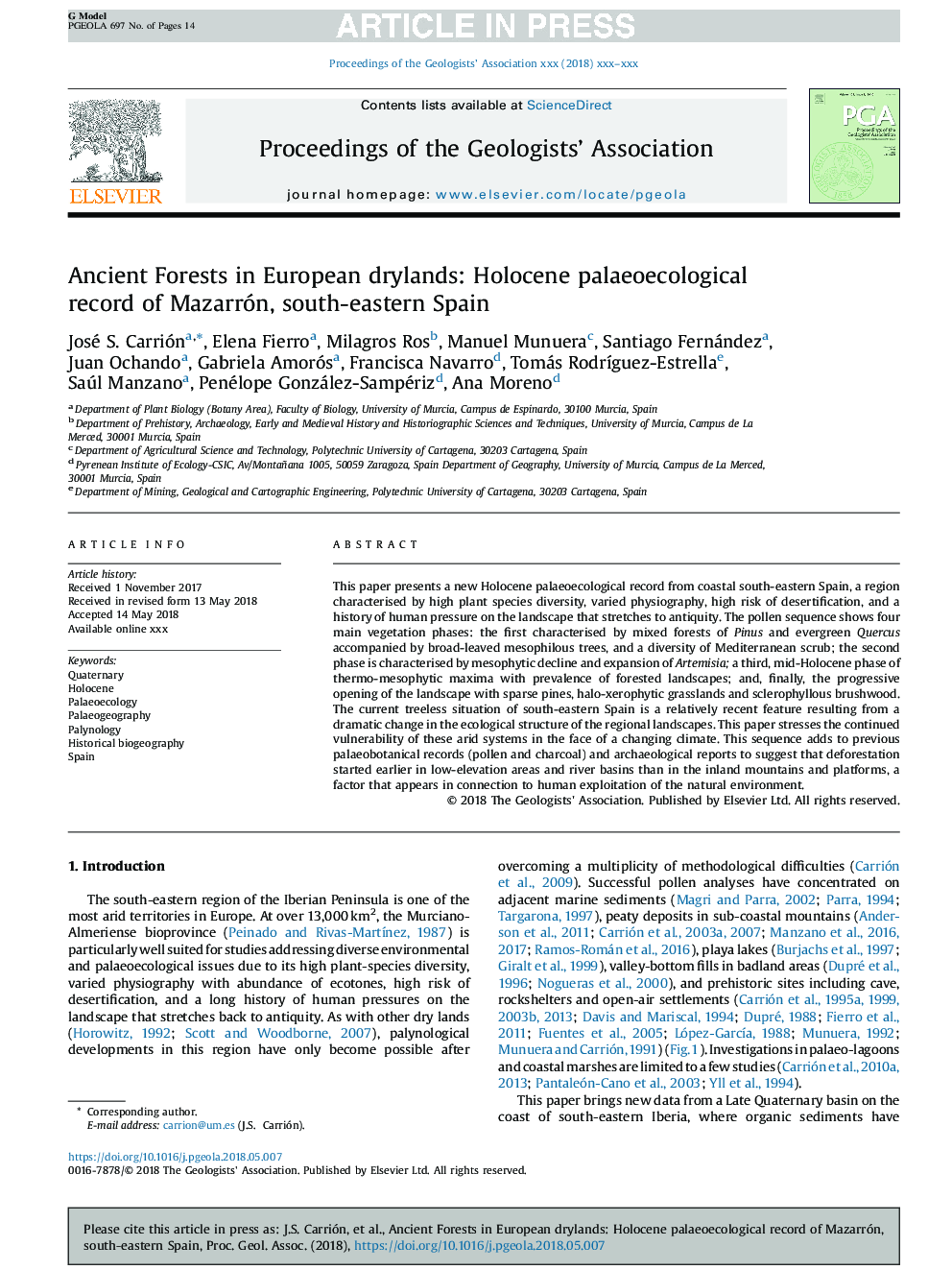| Article ID | Journal | Published Year | Pages | File Type |
|---|---|---|---|---|
| 8914561 | Proceedings of the Geologists' Association | 2018 | 14 Pages |
Abstract
This paper presents a new Holocene palaeoecological record from coastal south-eastern Spain, a region characterised by high plant species diversity, varied physiography, high risk of desertification, and a history of human pressure on the landscape that stretches to antiquity. The pollen sequence shows four main vegetation phases: the first characterised by mixed forests of Pinus and evergreen Quercus accompanied by broad-leaved mesophilous trees, and a diversity of Mediterranean scrub; the second phase is characterised by mesophytic decline and expansion of Artemisia; a third, mid-Holocene phase of thermo-mesophytic maxima with prevalence of forested landscapes; and, finally, the progressive opening of the landscape with sparse pines, halo-xerophytic grasslands and sclerophyllous brushwood. The current treeless situation of south-eastern Spain is a relatively recent feature resulting from a dramatic change in the ecological structure of the regional landscapes. This paper stresses the continued vulnerability of these arid systems in the face of a changing climate. This sequence adds to previous palaeobotanical records (pollen and charcoal) and archaeological reports to suggest that deforestation started earlier in low-elevation areas and river basins than in the inland mountains and platforms, a factor that appears in connection to human exploitation of the natural environment.
Related Topics
Physical Sciences and Engineering
Earth and Planetary Sciences
Geology
Authors
José S. Carrión, Elena Fierro, Milagros Ros, Manuel Munuera, Santiago Fernández, Juan Ochando, Gabriela Amorós, Francisca Navarro, Tomás RodrÃguez-Estrella, Saúl Manzano, Penélope González-Sampériz, Ana Moreno,
